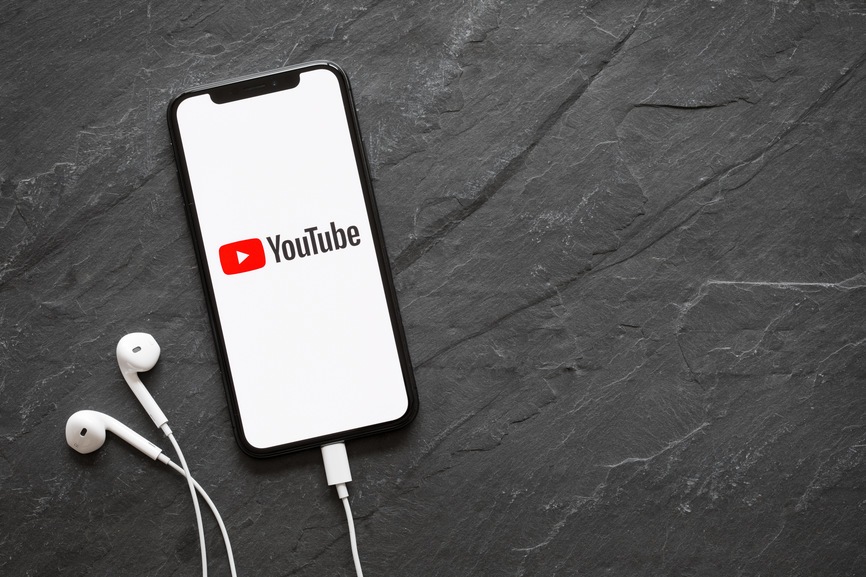
by Marelise da Silva | Jul 23, 2020 | SEO
SEO services and local SEO can lead consumers to your business by helping them to find your website, YouTube channel and other social media profiles. Over 2 billion people watch content on YouTube, every month, so this platform can give you fantastic exposure as long as you optimise your YouTube marketing videos.
How to Optimise your YouTube Marketing Videos with SEO Services & Local SEO
Keep your brand consistent with your overall branding strategy
The branding of your YouTube channel must be consistent with that of your website and other social media accounts.
1. Use keywords in the title of your videos
The title is what makes people want to click on your video, and adding keywords to the video title ensures the audience and SEO algorithms will find it.
2. Put keywords at the beginning of your video description
Only the first three lines of a description are displayed before you must click ‘see more’, so include the keyword in the first three lines.
3. Use keywords in the video file
The YouTube algorithm will find your video more easily if you include the keyword in the video file.
4. Use thumbnails to attract attention and show the video’s topic
Customise thumbnails to be eye-catching and accurately reflect the content of your business video.
5. Use relevant tags
Tags tell consumers and YouTube what your video is about. Keep your tags relevant and use keywords to promote content and context.
6. Pick the right category
For the best ranking, do thorough research and find a category the reflects your audience, style and content.
Search engine optimisation is not the only way to optimise your YouTube marketing videos. Post videos regularly, make them mobile friendly and easy to share, include a call-to-action in every video and create playlists that feature your videos with others.
Need more SEO marketing tips? Contact WSIOMS, your local SEO and SEO Services experts, for help with keyword research and SEO integration that will help your audience to find your carefully created content.

by Marelise da Silva | Jul 21, 2020 | Content Marketing
Content marketing, when done correctly, makes use of blogs and other forms of content to get consumers interested in your business. Most businesses struggle to find topics suitable for blog posts, but it doesn’t have to be overly complicated. To pick relevant topics, you need to research the questions people are asking, and answer them (while keeping SEO principles in mind).
Blog ideas for every business’ content marketing plan
Trending topics
The word ‘trends’ represents the general direction in which something is developing, a fashion or topic that is the subject of multiple posts on social media in a short time. Trends are reflective of what consumers consider important. To stay relevant, your business must show it understands the current consumer trends in your market.
Address common problems or pain points
There are common problems everyone experiences, and if your product or service can assist in solving that problem, a blog explaining the how and why thereof would go far in creating a positive brand experience. Just look at the many “How to….” queries one can find on the internet.
Demonstrate the uses of your product
The best way to sell your product or service is to show how customers use it in a way that solves a problem or enhances the quality of their life. Emotions influence buyer behaviour, so writing about an authentic customer experience could lead to sales.
Introduce your team
Profiling an employee creates a feeling of intimacy as if the consumer is part of your business family because they know something about one of your employees. It can also create trust, especially if your service requires consumers to let you into their homes and lives.
Because content marketing includes social media marketing strategy, digital marketing and SEO, it can become overwhelming to business owners very quickly. WSIOMS is here to help you manage your content marketing activities. For more information, visit our website to find out how we can help you to create a sustainable, relevant content marketing plan that fits your business’ needs.

by Marelise da Silva | Jul 13, 2020 | Digital Media Marketing
Inbound marketing and business to business (B2) marketing are different because individuals want an experience and businesses are focused on a positive return on investment. Both, however, want a problem solved. We provide a quick guide to inbound and business to business (B2) marketing.
What is Inbound Marketing?
The purpose of inbound marketing is to attract customers by creating valuable content and experiences tailored to them. It forms connections customers are looking for and solves problems they already have. It is, however, not enough to attract people to your website, you must also continue to help and support them after they become a customer. Inbound marketing strategies include three aspects:
- Attracting strategy: create and publish content such as blog articles, content offers and social media that provide value and optimise content with SEO. Attract the right customers with relevant content at the right time.
- Engaging strategy: communicate and deal with leads and customers in a way that will help create a lasting relationship with customers and potential customers on the channels they prefer. Use tools such as conversational bots, email marketing and marketing automation.
- Delighting strategy: ensure customers are happy and supported long after they make a purchase, as delighted customers can become brand advocates. Use tools such as email and marketing automation or create content customers can share.
What is Business-to-Business (B2B) Marketing?
Business-to-business (B2B) marketing involves the sale of your product or service to another company. It targets the needs, interests and challenges of individuals who make purchases for or on behalf of their company, thus making the company the customer. Here are some B2B marketing strategies you can use:
- B2B email marketing: business customers look for logic and a positive return on investment (ROI), so emails must focus on things that matter to them.
- B2B digital marketing: to be effective you must define your buyer persona, use the best website design, optimise your presence with SEO and use pay per click (PPC) advertising.
- B2B content marketing: content marketing provides valuable information to the consumer and business blogs are a great content marketing resource.
- B2B social media marketing: businesses are more likely to purchase from a company they can track through social media, so social media is a powerful tool to build brand awareness.
Link building is an essential part of SEO and a powerful way to boost your website’s presence on search engines. Contact us today for more information on link building and the inbound marketing services WSI OMS offers.

by Marelise da Silva | Jul 9, 2020 | Digital Media Marketing
Having grown up with technology, digital natives are very comfortable with curating their digital experience, and unfortunately for digital marketers, they love using ad blockers. Ad blockers have been part of the digital landscape for a very long time. Still, the rise in the use of ad blockers is quite alarming to digital markers- climbing from 21 million users in 2010 to about 75 million users in 2019 in the US alone. So what does this mean for digital marketers?
Digital natives and ad blockers explained
What is an Ad Blocker?
Ad blockers – also known as content blockers – are simple software programs that prevent ads from being shown on websites. They are typically browser add-ons, the most popular of which is AdBlock Plus.
Without ads on websites, pages load quicker, and data usage is lower – something that is good news for people with limited data plans or who live in areas with slower networks. Another benefit of ad blockers is that they can block the tracking and behavioral monitoring technology that profiles user behaviour. If you don’t want your online browsing monitored or browsing preferences sold to advertisers, ad blockers can be an attractive way to guard your privacy.
Who are Digital Natives?
Digital Natives grew up in the digital age, learning about technology from childhood. This exposure to technology in their formative years means that digital natives have a greater familiarity and understanding of technology than the generation that came before them.
Why are Ad Blockers a problem for digital marketers?
So what if users are blocking ads on their browsers? Shouldn’t users have a choice as to what they want to ingest on the internet? And the answer is yes, of course. But if you take a step back and look at the macro-view, you start to see the long-term impact that the adoption of ad blockers can have.
A majority of websites on the internet exist thanks to online advertising. Everything from blogs about Labradoodles to sites like the New York Times depend on online advertising revenues. That money helps pay for the writers that produce the content, the hosting costs, and the maintenance of the site.
When you visit a website, you might see an ad for a product you like, then you click on the ad and make a purchase. This gives the site owner a small fee, the product seller can sell their product, and the user can buy what they like.
But Ad blockers disrupt this process because if you have an ad blocker installed, you won’t see ads, so you won’t click and purchase – that means that the site owner doesn’t get their money and the product seller can’t sell their product.
What Can Digital Marketers Do?
While the situation can seem dire for advertisers and their clients everywhere, there is some good news:
- There is data on user preferences and if your strategy is too aggressive in following users across multiple devices, if your ads are annoying or irrelevant, you’re going to get blocked.
- Users are taking their data management more seriously and expect the sites they visit to be trustworthy.
- Users are willing to undo ad blocking on sites that are giving them the content they want.
Strategies that won’t chase visitors away
- Committing to creating ads that aren’t disruptive. That means no pop-ups, no auto-playing video ads with sound, no large sticky ads and no prestitial ads with a countdown.
- Having a website data policy and being clear as to what your visitors can expect when it comes to tracking cookies, data storage, etc.
- Creating excellent content that makes visitors want to support your site and prompting them to turn off their ad blockers to read further.
Digital Natives are going to continue to make up a more significant part of the digital population. And that means addressing their concerns when it comes to their privacy, and their digital experience is going to become more important.
If you want to break free from the dreaded ad-block, reach out to WSI’s Digital Marketing experts to ensure that your online presence doesn’t cause friction with your potential customers.

by Marelise da Silva | Jun 26, 2020 | Social Media Marketing
Many digital marketers love spending time developing social media marketing strategies because there is a lot of room for experimentation and creativity. But. Because social media marketing does not conform to loads of digital marketing rules, it can become overwhelming to achieve success in this medium. Here are a few key aspects that will help you achieve your goals in social media marketing in 2020
How to be successful in social media marketing in 2020:
Focus on building your brand through organic engagement
Your brand can have incredible products, outstanding visuals and professional customer service, but without organic engagement, you won’t stand out on social media. If you want to win loyalty, you need to engage your audience instead of putting up a perfectly produced image.
Your brand needs to be sincere, approachable and even a little light-hearted at times. The idea of social media is to sell the experience that your brand can provide in an authentic way. By engaging with your audience, you’ll gain loyal followers who will be brand advocates.
Show up where your audience is
By knowing your audience, you will be able to speak to them in the right manner, wherever they are engaging on social media. Don’t waste time creating content for platforms that your audience will never engage with.
Instead, invest your time in choosing appropriate channels and participating in discussions with your audience on those channels. Social media should never be treated as a static platform that merely houses your product images, but as a living community that is continuously growing and evolving.
Align contests with your goals
Everybody loves a giveaway, but if you’re using contests on social media incorrectly, you won’t get the ROI your brand can achieve. Instead of placing the focus on the prizes that your audience can win, shift your attention to creating a way for contestants to engage with your brand.
If you successfully implement this approach to all your contests, you will be attracting an audience that wants to interact with your brand, not just those who want to win the prize and disappear into the digital void.
Use video content to update and refresh your social media
Brands can learn a few lessons from independent creators, including how to use video content to liven up social media feeds successfully. With a good creation strategy, your brand can consistently show up in social media feeds with fresh video content that is engaging, interesting and easy to digest.
The best of all is that video content can be short, informal and incredibly powerful in communicating relevant information in an instant. This format gives your brand a way to always remain at the forefront of trends and developments in your industry.
If you need a fresh perspective on your social media marketing strategy or any of our other digital marketing services, contact WSI for a quote.






